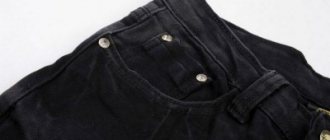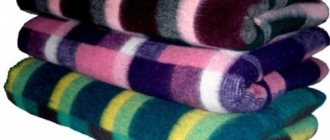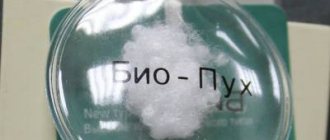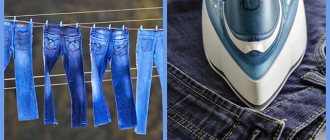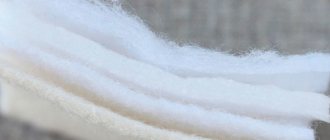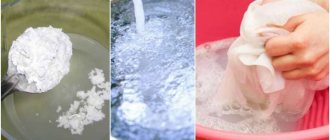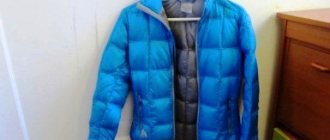Gentle washing is the main step to preserving the appearance of your laundry. The icons on clothes for washing are designed to help you understand the rules for cleaning a specific item. They are indicated on the product label, and their decoding is the key to the long service life of the clothing. Each label has a series of symbols that prohibit or permit certain actions when cleaning an item. If the jacket or coat is made of different materials (eg jeans and lace), it is best to wash it according to the instructions for the thinnest fabrics.
What does delicate mode mean?
To ensure that clothes made from certain materials retain their original appearance and do not become deformed after washing, washing machines are equipped with a delicate wash program. The washing process in this mode turns into a gentle treatment and is significantly different from the standard one.
The delicate wash program most often has a similar name, and may also be called hand wash or the “wool” or “silk” function on some devices.
Whitening
To return white clothes to their purity, bleaching is used along with washing. However, chemical bleaches can hardly be called safe. To avoid damaging the fabric, manufacturers place additional information on the labels:
- Triangle: bleaching allowed;
- Crossed out triangle: bleaching is prohibited, and chlorine washing powder must not be used;
- Triangle with the left side shaded: non-chlorine bleaches can be used;
- Triangle with “cl” written inside: Chlorine bleach can be used.
Decoding symbols on clothing labels
How to understand that clothes require delicate washing?
Icons on labels or a superficial knowledge of the properties of various materials will help determine that products need a delicate treatment.
What materials is it used for?
Typically, gentle washing is necessary for both synthetic and natural materials, for example:
- silk;
- wool;
- lace;
- cashmere;
- organza;
- knitwear;
- elastane;
- guipure;
- batiste.
This is just a short list of materials that require delicate processing. There are also modern fabrics, the fabrics of which consist of several types of fibers, so the list of things that need careful care is constantly growing.
In addition, do not forget that brightly colored clothing and items with stripes, lace and inserts also require delicate handling.
Legend
First of all, look at the product label. Special symbols on the tag will help you understand that an item requires careful cleaning: an image of a container of water with two horizontal stripes at the bottom. Also, the manufacturer often indicates directly in the center of the image the recommended degrees of heating of the water used during washing.
If there is no tag on the clothing, and you do not have proper knowledge of the characteristics of the fabrics, you can check their type yourself. If clothes stretch, fade or tear easily, they should only be washed on a gentle cycle.
The role of icons on clothing labels
The icons on the laundry tags indicate the precautions that must be taken when cleaning. Some fabrics are sensitive to high temperatures and chemical exposure. These “identification marks” are designed to prevent damage due to improper care. For example, cashmere, wool, silk, velvet, lace, and leather require a special approach. Colored cotton also often loses color and softness at temperatures above 40°C.
How does delicate washing work?
Automatic delicate washing always proceeds the same way, regardless of the model and manufacturer of the device, and has certain operating principles.
Features of the mode
The delicate regime always takes place under certain conditions:
- to minimize mechanical stress on the fabric, processing takes place in a large amount of water, while the drum is loaded to a maximum of 1/3;
- delicate fabrics react strongly to high temperatures, so the water practically does not heat up;
- drum rotations in gentle mode are smooth and slow, significantly different from standard washing;
- spinning is set either at low speeds or completely absent;
- Drying clothes directly in the washing machine on a delicate cycle is excluded.
To ensure effective washing, use special products for gentle washing and properly prepare clothes for processing.
At what temperature does it pass?
Most delicate fabrics, after exposure to high temperatures, lose their declared properties, as a result of which clothes made from them become unsuitable for wear. To eliminate this, the water heating temperature in gentle mode reaches a maximum of 40 degrees . This allows you to maintain the quality of the materials and at the same time remove dirt.
Duration of delicate wash
The duration of a delicate wash is determined individually depending on the type of fabric and the degree of soiling. Typically, treatment duration varies from 40 minutes to 2.5 hours. However, when setting the duration of the mode on the device, remember that the longer the product is in water, the more deformation of the fibers of the material is possible.
As indicated on the washing machine
Typically, the delicate mode is written in words or indicated by the same symbol as on clothing. In more rare cases, mode markings may differ on different models of washing machines. To understand which symbol indicates delicate processing, it is worth studying the instructions for the device.
What means should I use?
To ensure that delicate washing is as effective as possible, choose substances for processing that:
- dissolves well in water;
- thoroughly rinsed from the fibers;
- do not contain chlorine, enzymes or other aggressive substances;
- preserve the brightness and saturation of fabric colors;
- smell nice;
- give things softness and silkiness.
Some manufacturers of household chemicals produce special lines of products for delicate laundry. Alternatively, you can also use liquid gel-like substances.
Is spin used?
Delicate fabrics do not tolerate mechanical stress, so there is no spin cycle in the gentle wash mode. Sometimes spinning takes place, but only at minimum speeds - from 400 to 600 per minute.
How is it different from hand washing?
Delicate machine washing and hand washing are significantly different from each other. Hand-processing items takes much less time than automatic washing. You can only soak the product for a few minutes, lightly rub it and immediately hang it to dry. During manual processing, you can also adjust the detergent concentration and evaluate the effectiveness of your work. The washing machine, in turn, will prevent the water from overheating, which is quite difficult to do without a thermometer when washing by hand.
If both manual and delicate modes are installed on the same washing machine, the difference between them is insignificant. For manual mode, you can additionally set the soak function and increase the wash time.
Basic Operation Symbols
| Symbol image | Operation description |
| Washing clothes and other textiles | |
| Drying textiles | |
| Ironing | |
| Bleaching of textiles | |
| Professional clothing cleaning |
How to prepare things?
The quality of gentle processing depends not only on the characteristics of the machine mode and detergents. To ensure you are pleased with the results, be sure to properly prepare the items before washing. For this:
- arrange clothes into light and colored ones;
- use a water softener;
- Pre-wash stubborn stains and dirt or treat them with a suitable stain remover;
- do not soak products before putting them in the drum, with the exception of lace, it is better to soak them in warm water with a small amount of soda for 2-3 hours;
- do not overload the device drum;
- Wash small items in a special bag;
- Wash wool and cashmere only separately from other materials;
- avoid spinning;
- Remove laundry from the drum immediately after washing.
By following these rules, you will extend the life of your clothes for a long time.
Can't wash - clean
Caring for clothes does not always involve washing. Some items are not recommended to be washed. For example, a coat can easily be ruined by washing it in a machine or by hand. All that's left is dry cleaning. You can find out that the manufacturer recommends such care for a product by looking at the dry cleaning sign on the label - a circle. Accordingly, the “no dry cleaning” sign is a crossed out circle. That's all the housewife needs to know. The remaining symbols in this category are intended for dry cleaning workers. But if you are interested in what the letters in the circle mean, then the table will satisfy your curiosity.
Table - Meaning of letter symbols for dry cleaning
| Symbol | Cleaning Features |
| Icon A | — Dry cleaning; - any solvent can be used |
| P icon | — Dry cleaning; - use only carbon, ethylene chloride, monofluorotrichloromethane |
| F icon | — Dry cleaning; - use white spirit, gasoline, trifluorotrichloromethane |
| W icon | — Water cleaning |
If there are horizontal stripes under the circle with the letter, then the procedure using reagents that correspond to a specific type of cleaning is carried out delicately.
How to iron and dry clothes after washing
Wäschetrockner, BaWa 004
It is worth noting that gentle washing alone is not enough to preserve the original appearance of products. It is recommended to dry and iron clothes properly.
Tips for drying delicate materials:
- if you did not use a spinner, hang things on hangers over the bathtub and let the water drain;
- Never dry wet items on a line in a bent state or attach them with clothespins;
- either hang the product on hangers or lay it out on a horizontal, preferably mesh, surface;
- to speed up the process, do not place clothes on a radiator or other sources of artificial heat;
- Do not leave light-colored laundry to dry in the sun; try to hang the items in the shade;
- Place the guipure and lace on a flat horizontal surface and cover with absorbent material.
Tips for ironing delicate fabrics:
- for processing, use a high-quality iron with a clean and smooth sole;
- first, try ironing an inconspicuous area of the material with a slightly warm iron, see if the treated area is deformed;
- iron wool at a maximum of 180 degrees only through slightly damp cotton fabric;
- Either do not iron synthetics at all, or set the iron temperature to 110 to 130 degrees, and process only through cotton fabric;
- Iron the organza through a thick sheet of paper at a temperature of 100 to 110 degrees;
- iron silk clothes from the inside out slightly damp, setting the iron temperature to a maximum of 160 degrees; if the material is dry, to prevent streaks from appearing, do not spray the fabric, but moisten it by wrapping it in a damp towel;
- It is better not to iron velvet items, but to treat them with steam from a steam generator or by hanging the item over a bathtub with hot water;
- products made of nylon and elastane cannot be ironed;
If you are unsure of the type and origin of the material, look at the label on the product. The crossed out iron icon means that ironing clothes is prohibited, and the number of dots in the center indicates the degree of heating of the device.
Ironing
Since ironing is also a temperature effect on the fabric, manufacturers, in order to avoid damage to things at this stage of care, give recommendations on which mode to choose. Natural cotton and linen fabrics can withstand even the strongest heat, and using steam will only improve the quality of ironing. But high temperatures will only harm synthetics and wool and ruin the fabric.
| The fabric can be ironed in any mode and steamed. |
| The iron should be slightly heated to 100 degrees. This gentle mode is used for ironing non-natural fabrics - polyamide, polyacrylic, acetate, viscose. |
| The iron wheel is in the middle position (150 degrees). In this mode, wool, silk, viscose, and polyester are ironed. |
| Linen and cotton items can be ironed at the highest temperature (200 degrees). |
| The use of an iron is prohibited (No iron or Do not iron). Such markings are often found on the labels of products made from nylon or terry fabrics. |
| The product should not be ironed while wet. This applies to fabrics on which moisture will leave stains - satin, silk and satin. |
Gentle washing in automatic machines from different companies
In order not to get confused in the modes, carefully study how delicate washing is indicated on washing machine models from different manufacturers.
Ariston
The latest generation washing machines - Hotpoint-Ariston - are equipped with two gentle processing modes: “silk/curtains”, a gentle mode in cold water without spinning, and “wool”. Older models may have 3 wash options: Delicates, Wool, and Hand Wash.
Ardo
Ardo washing machines offer us three options for gentle care:
- “Delicate wash” - indicated by the image of a feather, lasts longer than others and includes a minimum spin.
- “Hand” - depicted as a hand wash icon, includes soaking, but does not have spinning.
- “Wool” - the mode is shown as a skein of yarn. It is distinguished by a minimum drum rotation speed during processing, a low water temperature from 30 to 40 degrees and the ability to select a spin cycle - from 0 to 800 revolutions.
Bosch
In Bosch washing machines, gentle treatment is indicated in two modes: “Delicates/silk” and “Wool”. Both functions are characterized by gentle rotation of the drum, low water temperature and minimal spin speed.
Electrolux
Electrolux brand machines are distinguished by a maximum range of delicate washing modes. The function is added in 5 variants:
- “Thin fabrics” - depicted by a flower.
- “Hand wash” - a picture of hand wash.
- "Wool" - displayed as a skein of yarn.
- “Silk” is a picture in the form of a butterfly.
- “Sport” - an image of a pair of sneakers (suitable for washing synthetic delicate materials).
Indesit
All washing programs on Indesit machines are numbered on the selection scale, and their explanation is shown on the outer panel of the detergent compartment. Standard functionality includes 2 gentle modes: “Silk” and “Wool”.
Siemens, Samsung, Beko, LG
Washing machine models of these brands contain complete information about the functionality of the device on the control panel, so selecting the desired program is not difficult.
Zanussi
Zanussi brand devices have 3 gentle care programs, which have 2 specific temperature modes:
- “Delicate fabrics” - an image of a flower.
- "Wool" - displayed as a skein of yarn.
- “Hand wash” - a picture of a basin with a hand.
Types of dry cleaning
Cleaning is rarely done at home; more often things are dry-cleaned, so these symbols will be useful to its employees.
A circle with a letter inside (it indicates a solvent that can be used) is a sign of approved dry cleaning.
Letter A - any organic solvent is used;
F—solvent-based cleaners should not be used; the use of hydrocarbons and trifluorotrichloromethane is recommended;
P - solvents based on monofluorotrichloromethane, hydrocarbon, ethylene chloride.
The horizontal line at the bottom of the sign warns that only a gentle cleaning mode is possible. A sign with two lines through it prohibits the use of dry cleaning.
The letter W allows wet dry cleaning, the same sign, but underlined by two lines - minimal mechanical impact when cleaning delicate fabrics.
Delicate wash and modern technologies
Washing machine software developers regularly update the functionality of their products, introducing various innovative technologies. This affects all washing modes, including delicate.
Eco Bubble
Similar innovative technology is installed in Samsung devices. Helps improve the quality of washing by creating air bubbles with a special generator. Rich foam made from water and detergent penetrates deep layers of fibers and does not harm fabrics at all. With the Ecobub function, even heavily soiled items can be washed in cold water.
6 Motion
The technology is used in LG washing machines and involves selecting a specific drum rotation out of 6 possible ones. You can set basic or reverse rotation, saturation, smooth, twist, wiggle. The last 3 modes are fully suitable for improving the quality of delicate washing.
Honeycomb and teardrop drums
The latest models of Miele washing machines are equipped with drums with a special surface. A special form of coating in the form of a honeycomb creates a special film between the clothes and the drum, which ensures the most gentle washing.
Improved Bosch devices are equipped with drums with protrusions of various shapes in the form of drops. In such a drum you can safely wash delicate fabrics without fear of them becoming deformed.
True Steam
Steam processing technology allows you to wash things as carefully as possible. Washing machines from Electrolux, LG and Miele are equipped with similar technology.
Inscriptions on tags and their translation
Also on the tags there is information about the material, and this also needs to be taken into account both when choosing clothes and when caring.
Once you cut off the label, do not throw it away. The information presented on it will be useful when the need arises to wash the product.
Important! When choosing a washing mode, it is better to rely on the composition of the fabric: the higher the percentage of synthetics, the easier it is to care for the item.
Save or take a photo of the tag - the information on it will help you choose the right way to care for the item.
On foreign-made clothing, the composition of the fabric is indicated either in abbreviation, two letters, or in full words. And to handle things correctly, you need to understand what is what. The following designations are found:
- cotton, abbreviated as CO - this is cotton;
- linen, abbreviated as LI - this is linen;
- union linen, abbreviated as HL - this is flax with impurities;
- silk, abbreviated as SE - this is silk;
- cashemire, abbreviated as WS - cashmere;
- wool, abbreviated as WO - wool;
- viscose, abbreviated as VI - this is viscose;
- modal, abbreviated as MD - this is modal;
- acrylic, abbreviated as AR - this is acrylic;
- elastane, abbreviated as EL - this is elastane;
- polyester, abbreviated as PE - this is polyester;
- laycra, abbreviated as LY - this is lycra;
- polyacrylic, abbreviated as PC - this is polyacrylic;
- acetate, abbreviated as AC, is acetate fiber;
- polyamide (nylon), abbreviated as PA - this is polyamide (nylon);
- metal, abbreviated as ME, is a metallized thread.
Decoding and translation of names of materials.
Note! A bag with a small piece of fabric is often attached to the inner seam of the item. This patch is an indicator that allows you to check the reaction of the fabric to washing, bleaching and other manipulations.
The patch is an indicator that allows you to check the reaction of the tissue.
Is it possible to set the gentle mode manually?
If your washing machine doesn't have a delicate cycle, don't despair. You can set the gentle fabric treatment function yourself. Unfortunately, you cannot configure the smooth reel rotation mode on your device. However, you can set the optimal water heating temperature, spin speed and processing duration on almost any automatic machine.
Algorithm of actions:
- First, read the operating instructions for your washing machine to ensure you set the required values correctly.
- Choose a shorter wash cycle. Optimally - about 40 minutes.
- Set the desired heating temperature. For delicate fabrics, this figure varies from 30 to 40 degrees.
- Program a double rinse to better rinse detergent from fabrics.
- It is advisable not to specify spin in the program. However, if necessary, adjust the setting to a maximum of 600 rpm.
- Disable the drying and ironing function if these programs are included in the basic machine settings.
Natural drying.
| Drying in the shade | |
| Vertical drying in the shade. | |
| Vertical drying in the shade without spinning. | |
| Dry horizontally in a flat position in the shade. | |
| Horizontal drying in the shade in a straightened state without spinning. | |
Why is gentle washing dangerous?
Delicate washing helps preserve the original quality of the material. However, it is believed that such processing may be harmful to health because:
- low temperatures do not kill dust mites, harmful microorganisms and bacteria;
- if you use dry powder, it may not completely wash out of the material;
- a regular washing program in cold water provokes the formation of mold on the inner walls of the washing machine;
- Sometimes cold water cannot wash away stubborn stains and dirt, even when using high-quality detergents.
Considering the indicated disadvantages of gentle washing:
- do not use the delicate mode to process children's things;
- drive the car at high temperatures from time to time;
- Try to wash stains immediately after they appear.
The algorithm for delicate washing is to be gentle on the fabric, use non-hot water and avoid spinning. Use this treatment to clean delicate fabrics and materials with bright prints, inserts and lace, and then they will remain in their original form for a long time.

